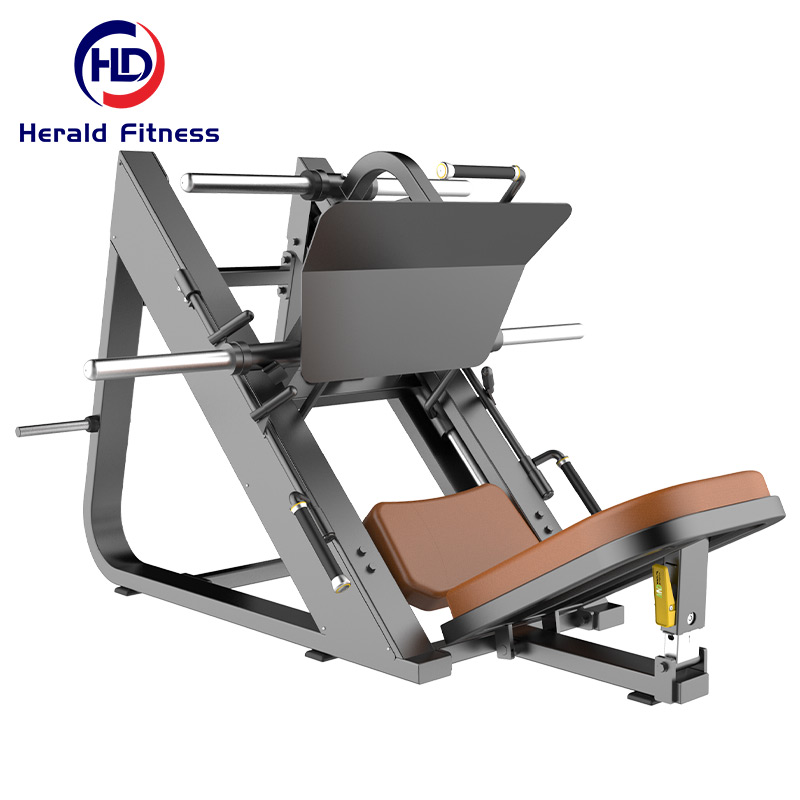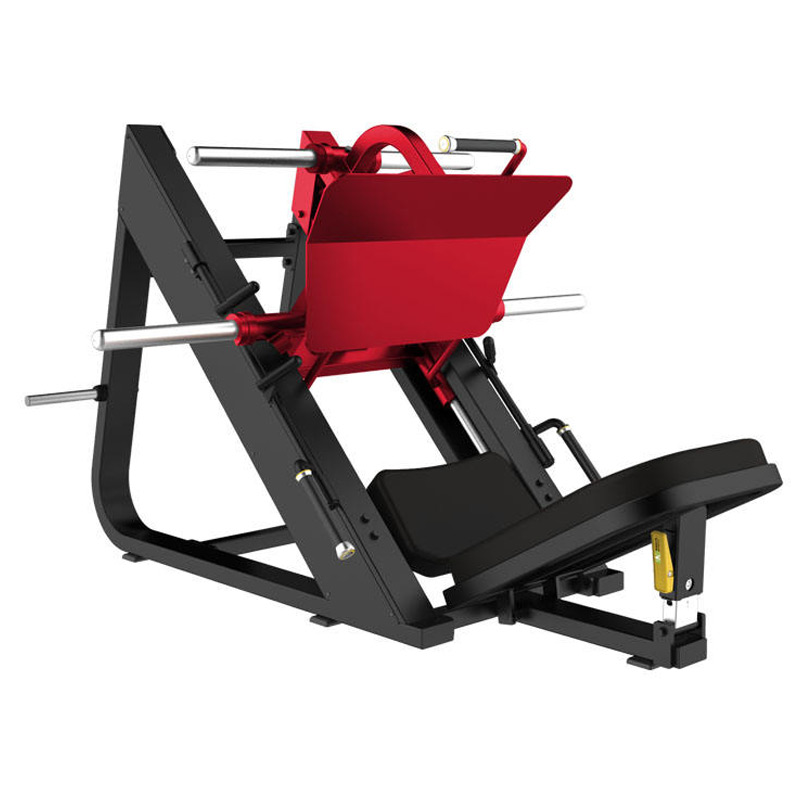Features of the Leg Press Machine
- Adjustable Backrest: Allows users to adjust the backrest to a comfortable position that suits their body size and exercise preference.
- Foot Platform: Features a large foot platform where users place their feet to push against resistance, typically adjustable to accommodate different leg lengths.
- Weight Carriage: Includes a carriage or sled that moves along a track, loaded with weight plates to provide resistance for leg press exercises.
- Safety Mechanisms: Often equipped with safety locks or stops to prevent the carriage from moving unexpectedly, ensuring user safety during workouts.
- Variety of Foot Positions: Some machines allow for different foot positions (e.g., narrow, wide, high, low) to target various muscles of the legs and glutes.
Benefits of Using the Leg Press Machine
- Strength Development: Targets the major muscle groups of the lower body, including quadriceps, hamstrings, and glutes, promoting muscle strength and hypertrophy.
- Joint Support: Provides support for the back and hips during leg exercises, reducing the stress on the spine compared to free-weight exercises like squats.
- Controlled Movement: Allows for controlled and stable movements, making it suitable for users of varying fitness levels and abilities.
- Isolation: Helps isolate the leg muscles being worked, allowing users to focus on specific muscle groups without the need for as much balance or stabilization.
- Versatility: Offers versatility by enabling users to perform different variations of leg presses (e.g., single-leg press, calf press) and adjust resistance for progressive overload.
Typical Uses
- Leg Press: The primary exercise performed on this machine involves pushing the platform away from the body using the legs, extending them fully before returning to the starting position.
- Calf Press: Some machines allow users to perform calf raises by adjusting foot position on the platform and pressing through the balls of the feet.
- Single-Leg Press: Users can also perform single-leg presses to address strength imbalances between legs or for targeted muscle development.
Proper Usage
- Adjustment: Adjust the seat and foot platform to ensure proper alignment of the knees and feet before starting the exercise.
- Starting Position: Sit comfortably with the back firmly against the backrest, grip the handles (if available), and place the feet shoulder-width apart or as desired on the platform.
- Execution: Push the platform away by extending the legs, exhaling during the exertion phase, until the knees are almost fully extended but not locked. Slowly return to the starting position while inhaling.
- Safety: Engage safety locks or stops before loading weight plates onto the carriage, and ensure the weight is secured before starting the exercise.
Tips for Effective Use
- Warm-Up: Warm up with light cardio or dynamic stretches to prepare the leg muscles before using the leg press machine.
- Range of Motion: Use a full range of motion to engage the muscles fully and avoid locking the knees at the top of the movement.
- Progressive Overload: Gradually increase the weight load to challenge the muscles and promote strength gains over time.
- Cooldown: After completing leg press exercises, perform static stretches to help reduce muscle soreness and improve flexibility.





















































Reviews
There are no reviews yet.